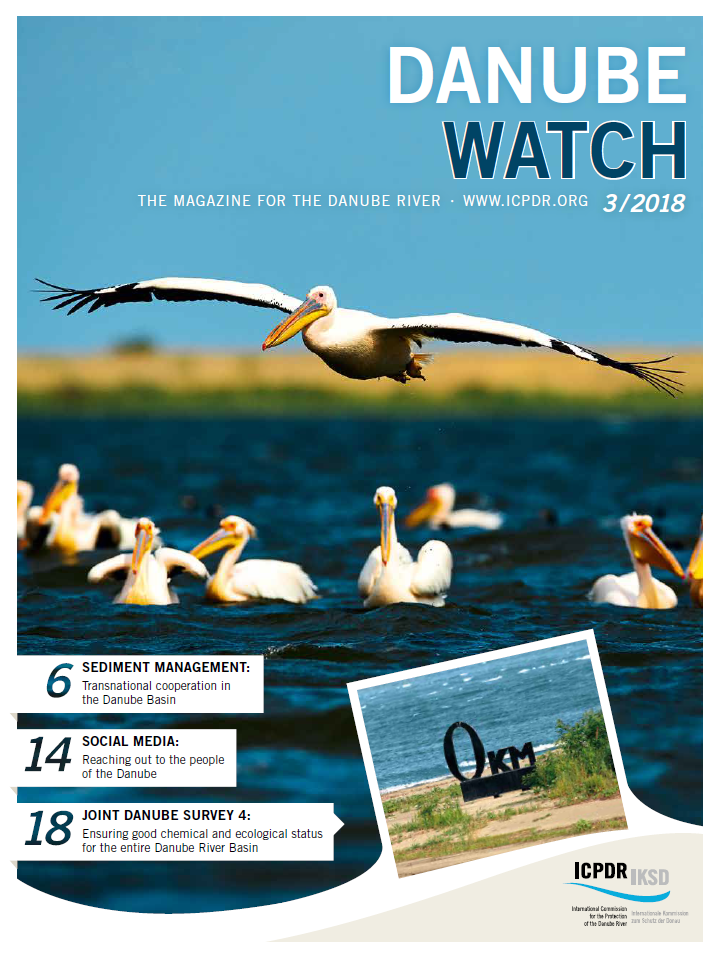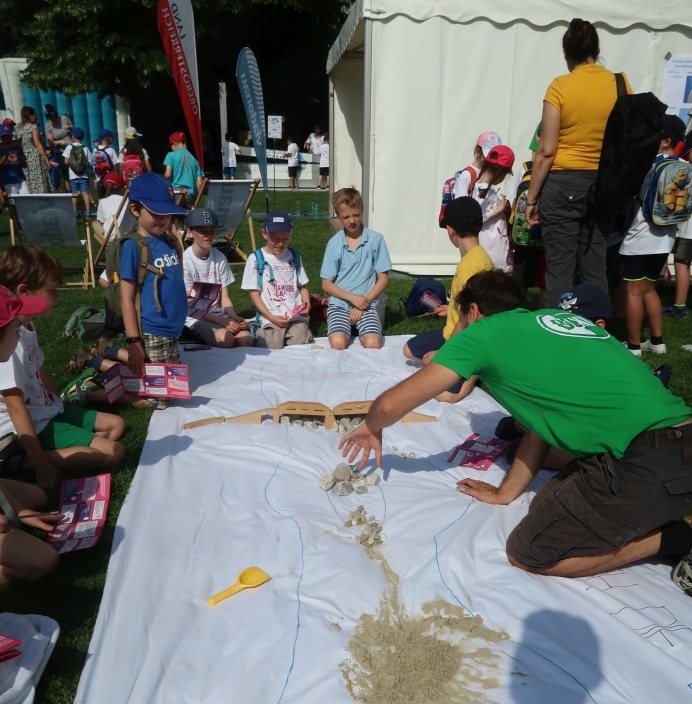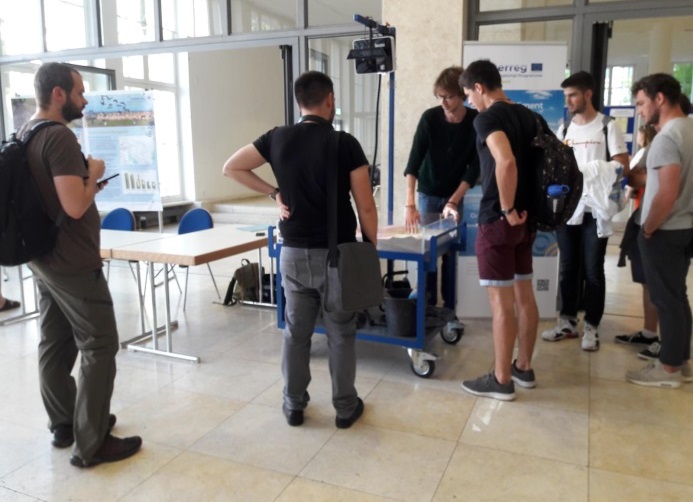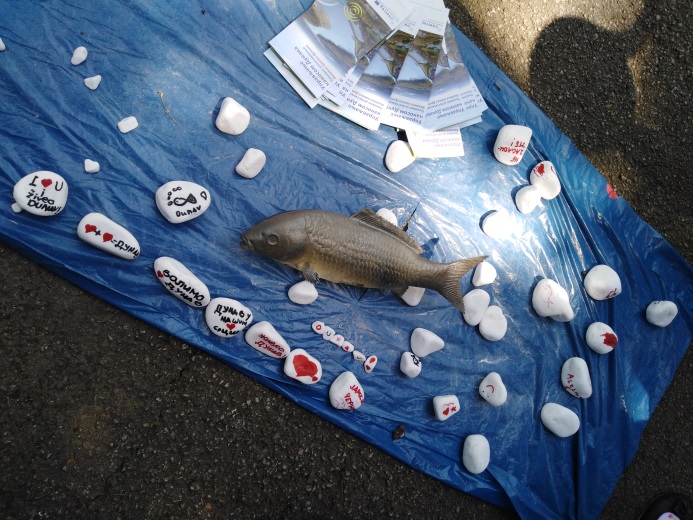|
|
| |
Table of Contents
Project Prolongation: What are we doing with 5 more months?
DanubeSediment in Danube Watch
International experts discuss sediment management issues
Danube Day 2019: How our project got active for a safer Danube
The River Model Network: looking for partners in research?
| |
 |
Project Prolongation: What are we doing with 5 more months?
|
| |
|
As you may have noticed, we are still publishing news, carrying out events and sending you newsletters, although we have exceeded the end of June. Yes, the DanubeSediment project has been prolonged until the end of November 2019! In order to produce high quality results, we took more time than expected to collect the necessary data from all nine countries and to come to common interpretations in cooperation with the relevant project partners.
So, was has happened in the meantime and what are the final steps?
The Sediment balance is being finalised within the next weeks. We have some last data gaps to fill and some interpretation of data needs to be clarified. For example, whether a reach is prone to erosion or sedimentation, depending on the long-term or short-term view. These results will be presented and discussed at the International Expert Workshop on the Sediment Balance of the Danube, planned for 21 October in Bratislava. Save the date!
During the last months, we have been evaluating the collection of good practice measures to improve the sediment balance. The International Expert Workshop on Sediment Management Measures in Bucharest took a first look at the assessment (read more in the chapter below). Between July and September, each partner country has been holding national workshops to discuss the measures with their respective stakeholders. The feedback and recommendations will flow into our final project results, the Danube Sediment Management Guidance, directed at policy-makers, and the Sediment Manual for Stakeholders that will present a variety of good-practice sediment management measures.
All our project results will be presented to interested stakeholder at the final International Stakeholder Workshop, which will take place at the end of November 2019 in Budapest. We look forward to seeing many of you there!
|
|
| |
 |
Danube Sediment in Danube Watch
|
| |
Sediment is an important and upcoming issue for water management in the Danube River Basin. This is why the newest issue of the ICPDR magazine Danube Watch highlights the topic of sediment management! The DanubeSediment project team has contributed to the content of this issue with several articles:
|

Danube Watch 3/2018
|
|
|
|
| |
 |
International Experts discuss sediment management issues
|
| |
On June 26th 2019, over 50 experts came to Bucharest to participate in the International Workshop on Sediment Management Measures. Hosted by National Administration “Romanian Waters”, the workshop presented good practices in sediment management in rivers. The main goal of the workshop was to discuss the project recommendations and sediment-related good practice measures together with key players and partners from different sectors of sediment management. The workshop results will flow into the Sediment Manual for Stakeholders and a Guidance document. The DanubeSediment project aims to support both practitioners and policy-makers in developing an innovative approach for transnational sediment management and strengthening inter-institutional collaboration in the Danube River Basin. For details please have a look at the summary on our website.
|
| |
 |
Danube day 2019: how our project got active for a safer danube
|
| |
Under this year’s motto „Get active for a safer Danube“, the DanubeSediment project partners took part in an array of Danube Day events and festivities. During these celebrations, our project focused on increasing awareness about the role and importance of sediments in the Danube. In some countries, the Danube Day events were visited by thousands of people!
In Vienna, Austria, our partner BOKU participated in the Danube Day on 13 July. Besides showing the project video and posters, the team demonstrated measurement devices and a physical model of a hydropower plant. One very popular activity was a game for children, where the kids had to help sediments of different sizes make their way through several barriers from the source of the Danube River to the delta (see top photo). The big question of the exhibit “What happens if too many sediments deposit in a river?” initiated discussions about a “safer Danube” with stakeholders that attended the festival.
|
  
You can find more photos in our Danube Day-Gallery.
Photos: Philipp Gmeiner, IWA/BOKU (top), David Singer, LfU (middle), Ljiljana Marjanović, Jaroslav Černi Water Institute (bottom)
|
|
Our partner Croatian Waters explained why a safer Danube must be clean and healthy. At the festival in Vukovar, Croatia, where they presented the project, the audience could see how water analyses are taken from polluted, clean and averagely-polluted water. Small animals, which are living in the water, could be looked at through the microscope.
This year’s Danube Day in Germany was split into two locations on July 2nd: LfU presented the project at a press conference celebrating the Joint Danube Survey 4 in Jochenstein at the Austro-German border. Together with TUM, LfU had a booth at the university in Munich. Besides project information, the special attraction was the interactive sandbox (see photo in the middle).
The Danube Day in Belgrade, Serbia, took place on 15 June. Our partners JCI and Plovput organised an info desk with postcards, a poster and an interactive workshop for children. They could write messages on stones that were sent downstream on a model of the Danube River. The workshop taught children and other visitors what sediments are, how they are transported, how islands are formed in the river and much more.
On June 22 in Slovakia, Danube Day was held at a wild water sports area near Gabčikovo dam. There, our partner VUVH presented our project and its activities. The audience had the opportunity to get to know different animals that live in the Danube.
At the central Romanian event on June 20th, our partner NARW raised awareness for the project by distributing material and showcasing the project posters. The project was highlighted in the high-level opening sessions. Additionally, children could participate in workshops for water analyses and biology.
|
|
| |
 |
the river model network: looking for partners in research?
|
| |
Historically, human activities have changed the Danube and its tributaries. For example, straightening the river for flood protection, altering waterways for navigation or building dams hydropower generation: all these changes affect the natural sediment balance of the river. In order to improve our understanding of the relationship between human activities and sediments transported by the river, we can apply numerical and physical river models. These models simulate the water flow, sediment transport and other morphodynamic processes.
|

Research channel at the
Danube in Vienna (photo: BOKU)
|
|
They can analyse concrete fluvial processes through temporal upscaling and provide an opportunity to analyse cause and effect relationships. Furthermore, models can simulate the influence of changing boundary conditions like land use and climate. Therefore, they are often used as a planning tool to develop, evaluate and optimise measures.
As the DanubeSediment project wants to strengthen inter-institutional collaboration, a multinational network of manufacturers, owners and operators of river models was collected. Please feel free to browse through this collection. If you are interested in networking or working in the field of river modelling, you are also invited to contact the model owner or operator.
Click here to download the River Model Network. |
|
| |
 |
interesting links
|
| |
|
| |
 |
published by
|
| |
|
|
|
|
| |
|
If you have received this newsletter, you have been included on one or more of the Danube Transnational Programme/projects postal mailing lists. We are committed to respect and protect the privacy of personal data collected. We regard your personal data as confidential information and will never communicate it to third parties. Your personal data are used mainly for the express purpose of receiving the newsletter. Your mailing details may also be used by the DTP and its projects for information and dissemination purposes strictly related to the programme and its projects. If you prefer not to receive more of this newsletter and your data not to be used for dissemination purposes, you can unsubscribe by sending a reply email.
|
|
|
|
|
|
